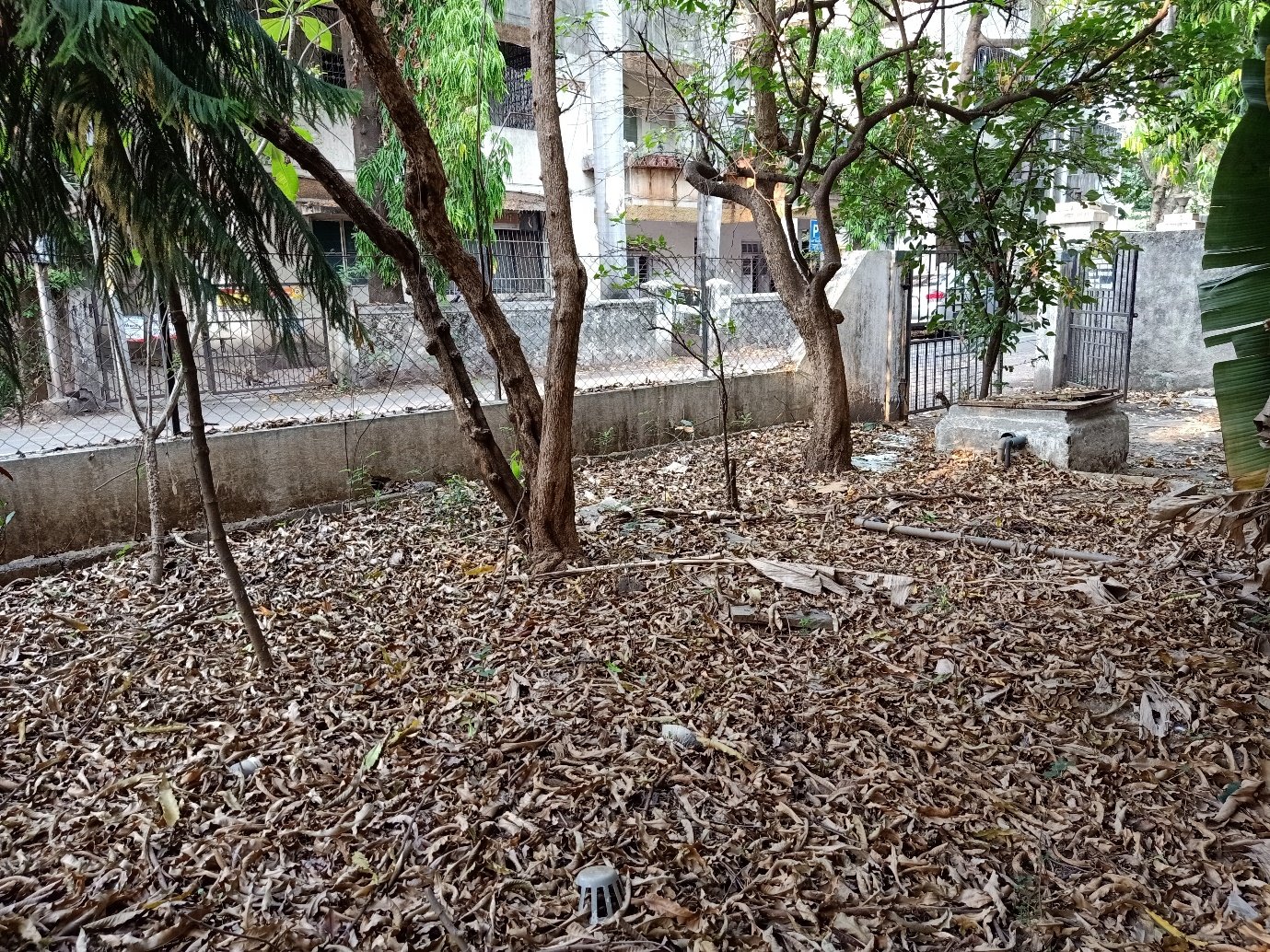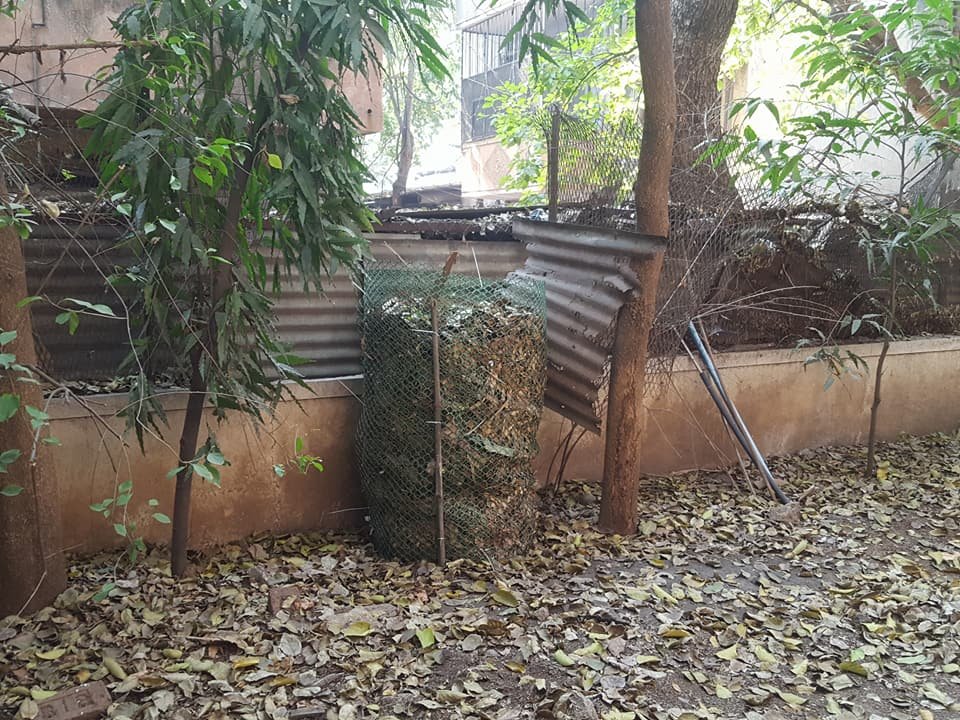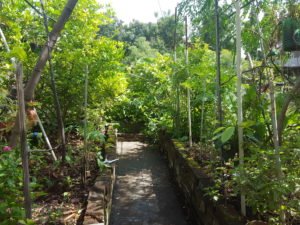Vision: “Not a Single Dry Leaf is Burnt in India”
Problem:
Around November to March is the time when deciduous trees shed leaves. A large quantity of leaf litter is generated.

It is often burnt since that seems the most convenient option.
Burning of dry leaves is banned in many countries. It leads to air pollution. It is a major health as well as fire hazard. The smoke contains many toxic particles and gases.
Burning of dry leaves generates a large quantity of particulates that can reach deep in lung tissue and cause
- Coughing
- Wheezing
- Chest pain
- Shortness of breath
- Long-term respiratory problems
For the people who suffer from asthma or other breathing disorder, leaf burning is extremely hazardous.

Complete burning results in production of Carbon dioxide, while Carbon monoxide is released from incomplete burning, such as with smouldering leaf piles. Carbon monoxide is absorbed in blood where it reduces oxygen-carrying capacity of the Red Blood Cells (RBCs). It also is one of the greenhouse gases.
Fallen leaves contain 50-80% of the nutrients that trees extract from the soil during a growing season. When we burn dry leaves, we not only create pollution but also destroy the valuable nutrients that should go back to the soil.
Solution:
- MULCH
- COMPOST
- DONATE
Dry Leaves Challenge
Let us discuss how to create a project to manage dry leaves in your premises. It could be your bungalow, an apartment building, a society or your organisation campus.
I will show you what factors you need to consider. In the next section, we will get into the specifics of your premises.
Broad classification of areas and solutions for the same
All areas in your premises are not same.
There will be some areas where children play, people take walks. These are the areas where you cannot let dry leaves remain as it is.
However, there will be some areas or small patches, that are not frequented by people. In that case, we can adopt a different approach.
Here are some broad categories.
Almost pristine forest patch
Description
These areas are comprised of large trees, creepers, shrubs. Here, since trees are big enough, their roots are deep and do not need watering. In short, these are the areas with almost no human interference. Something like this?

Solution
Here, strategy is “no strategy”. Just don’t do anything and let the natural process to take place. Leaves will fall, they will form a layer over the ground. It will protect soil and help conserve moisture during summer. Various insects would take shelter under these leaves.
Eventually, when monsoon arrives, leaves will decompose, and nutrients will be returned to the soil.
This has an additional benefit. Remember our discussion about soil carbon? This patch of soil will be rich in carbon. During monsoon, this area will absorb water efficiently, preventing flooding.
Road-side
Description
This is the area between road and building/ garden. This is mostly applicable for societies and organisation campus.
From October onwards, roads are covered with leaf litter. Housekeeping staff members sweep the roads and, in just a few hours, leaf litter returns.
Solution
Area between road and building, is the long corridor that can be utilized to setup temporary enclosures for composting.

Composter made of pigeon mesh. Very cost-effective and convenient
An opening will be kept towards bottom of the composter to take out ready compost.
Temporary enclosures such as above can be created in these open spaces. Each lane will have no. of such enclosures. Open soil beneath will prevent water logging since excess water if any will be absorbed.
Enclosures can be just about anything. The requirement is that it should be porous so as to allow aeration. Keep adding dry leaves. Water it regularly.
As he leaves break down, their volume reduces, and level goes down in the composter. Thus, it continues accommodating new leaves.
After 3 months, compost will be ready. The ready compost will not have any intact leaf forms. It will be quite homogenous, dark mass.
Patches with no vegetation
Description
Usually each campus has some neglected patches where nobody goes. Here, pile composting can be practiced. Usually in large campus, leaves are dumped at such patches anyway. There is nothing wrong in dumping leaf litter and let nature take its course.
Solution
This practice can be continued.
Alternatively, composting can be planned here in more systematic manner. Ready compost later can be sold enabling earning for the institute.
Method of pile composting can be adopted for this purpose. Here it is again, for your reference.
Pile Composting
Create rectangular piles of dry leaves if you have a large quantity of dry leaves and sufficient open area available.

Fig: Pile composting
Height of the pile can be 3 to 3.5 feet. Length can be anything, as per the availability of the open area.
Start with one pile. Keep adding dry leaves to it. You can add some source of nitrogen after each layer if you wish to speed up the process. It is discussed in detail in the section “Speeding up the process” below.
When pile reaches the said height, start with the next pile. Width of the pile should not be more than 4 to 4.5 feet. A person should be able to remove the ready compost without much difficulty. If pile is too wide, then it would be inconvenient.
Pile should be watered regularly. The quantity of the water should be just enough to wet the leaves. Composting is fast when pile gets enough moisture and oxygen.
If you miss watering it someday, no problem. If there is a scarcity of water in the summer, you can skip watering the pile. It will just slow down the composting process, but no harm will come to it.
Once monsoon starts, it will take care of everything. If there is a gap in the rains, only then you would need to water the pile. After 2-3 months, remove a portion of the upper layer to check the status. The lowest layer, being the oldest would decompose the most. If compost is ready in the lower layer, remove the upper layer in the empty area between the piles, take out the compost. Hence the distance between the two piles should be such that a person would be able to stand comfortably while removing compost from the pile.
The ready compost will not have any intact leaf forms. It will be quite homogenous, dark mass.
Instead of pile, you can have a heap. The diameter should be such that you should be able to reach the central part comfortably. Also, if heap is too large, all the parts don’t get sufficient water and it might reduce the speed of decomposition.
Harvesting ready compost
- Compost once ready can be utilized for institute garden
- It can be sold at a modest profit
- An agreement can be made with farmers who will take away the ready compost
Note:
If harvesting is not possible, compost can be simply spread and left as it is in the soil.
Creation of plant beds
Empty space within residential areas can be utilized for plantation. Beds will be created using dry leaves and available soil. Once leaves are partially decomposed, plantation can be carried out.
This distributed model will accommodate a large quantity of leaves all throughout the fall.
We can encourage children in the society to adopt a bed and do plantation. There could be healthy competition.
Herbs that are easy to grow and commonly used or medicinal herbs can be planted here. These include
- Lemongrass (गवती चहा)
- Curry Leaves plant (कढीलिंब/ कढीपत्ता)
- Basil, various varieties (तुळस)
- Mint (पुदिना)
- Ajwain (ओवा)
- Asparagus (कोरफड)
A very good vegetable garden can also be created with help of parents and.
Advantages
- Toxin-free food for children
Vegetables are sprayed with pesticides. They contain various chemicals which are harmful to us. Growing your own food is the best strategy to ensure toxin-free food for our children.
- A healthy hobby for children
Gardening has a calming effect. It teaches patience, caring. Children will get a good exposure in these formative years.
For adults, a lot of awareness is required to change the mindset that perceives dry leaves as waste. For these children, it will be imbibed on their minds automatically.
- Prevention of soil erosion
Heavy rains must be eroding away the soil from these slopes every year. A plant cover will protect the soil. Plant cover will also reduce dust during dry summer months.
- Easy availability of useful herbs
“Out of Sight” Method
I personally do not recommend this method since it does not change the mindset that perceives dry leaves as waste. It forms a last resort if none of the above methods can be implemented.
Dig larges ditches in the empty plots to accommodate quantity of leaves you have. Continue dumping leaves in the ditch. Once it is full, cover the whole thing with a layer of soil. Decomposition will happen anyway and nutrients from the leaves will be returned to the soil.
Collaboration is the key
While devising any strategy, deciding spot for composter, it would be good idea to involve housekeeping staff in the process. They are the ones who sweep the campus. They would be the one who would be looking after the compost process. Hence, observing how they work will be useful. If administration can take out some time for observation, it will provide an idea of how they work, their challenges, their conveniences.
For any successful composting project, emotional involvement of the team members is vital. Composting should not seem as an added burden, something forced on them. Making them equal partners in the process would go a long way in ensuring success of the project.
A discussion session can be arranged with them to communicate idea of this project, their role and understand their views.
Conclusion
Dry leaves is an intimidating challenge but not impossible to tackle. It is a very good opportunity to bring community together. Little “out-of-box thinking, problem solving mind-set and community collaboration can go a long way in solving this problem.

